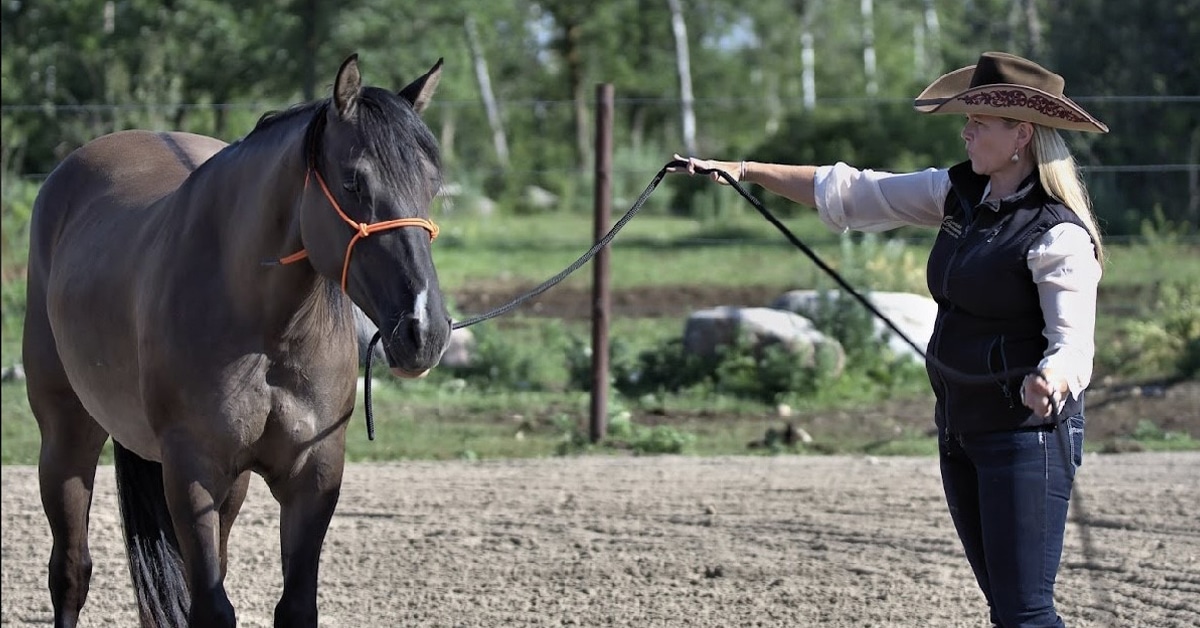At some point in our relationship with our horse, we all face moments where we wish we could understand our horses better. One of the most important things I have learned throughout my career is to establish a clear line of communication with my horse. That seemed simple enough, but what I was missing in the training, was learning more about how the horse communicated to me.
In a herd setting, horses use their body language to “speak” to one another. From swishing their tails, pinning their ears, or quickly moving towards another horse to move them to a different place in the herd, these cues are the only way horses communicate to each other. By taking the time to pick up on those subtle cues, I was able to establish a better, more open line of communication with the horse. In a positive and safe way, I’ve developed a philosophy of horsemanship and created a checklist of groundwork exercises that I do with each and every horse.
A Tip to Get Started
Personally, I like to use a rope halter and lead line when working with horses for groundwork.
Ideally you should work in a safe environment, be it a round pen or a closed-off arena or outdoor ring.

